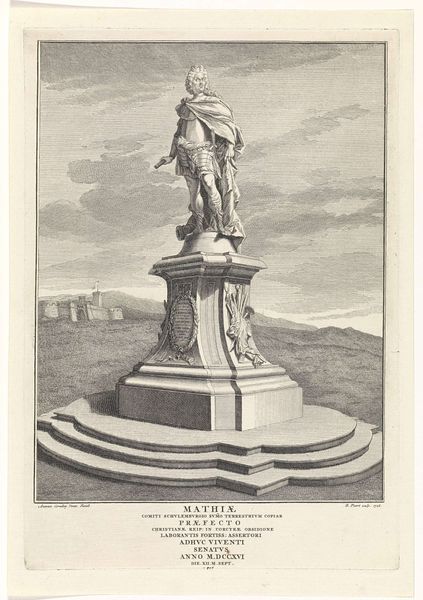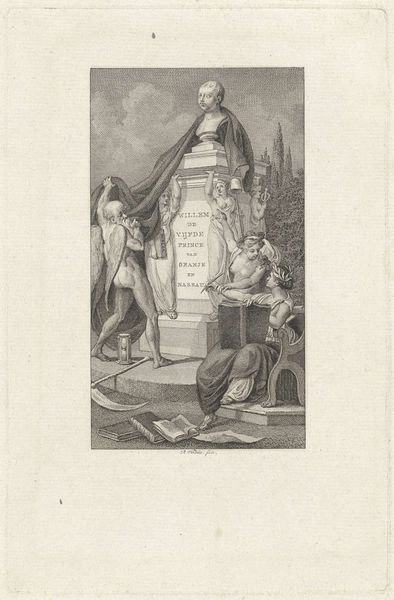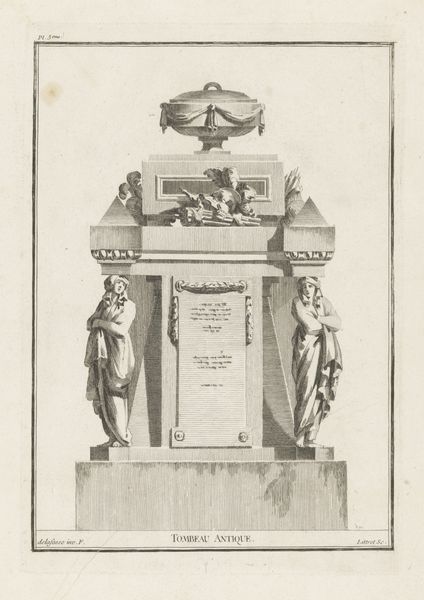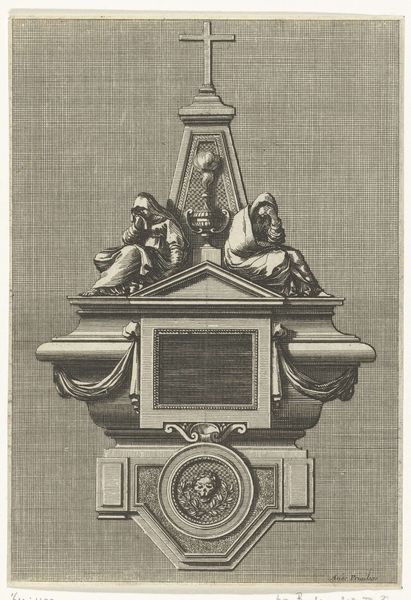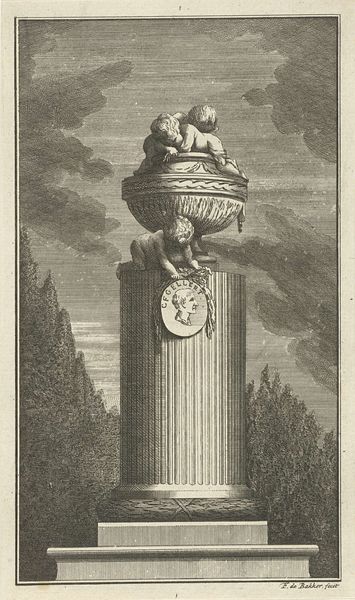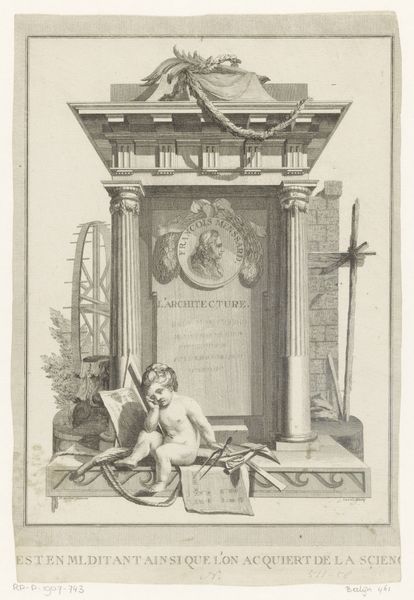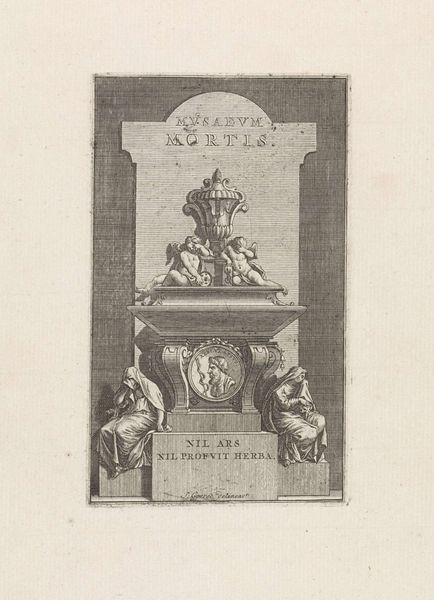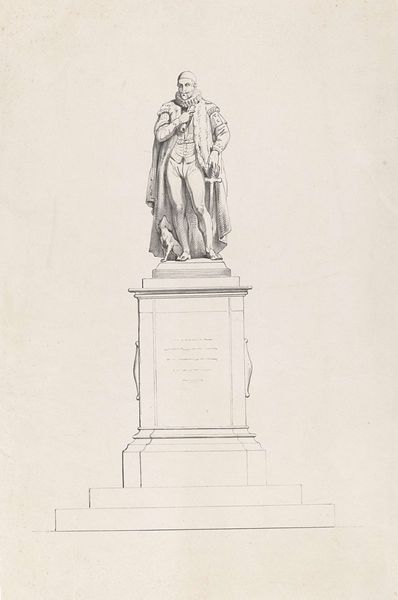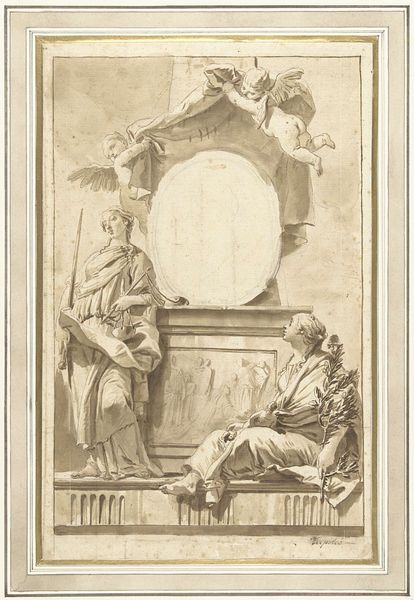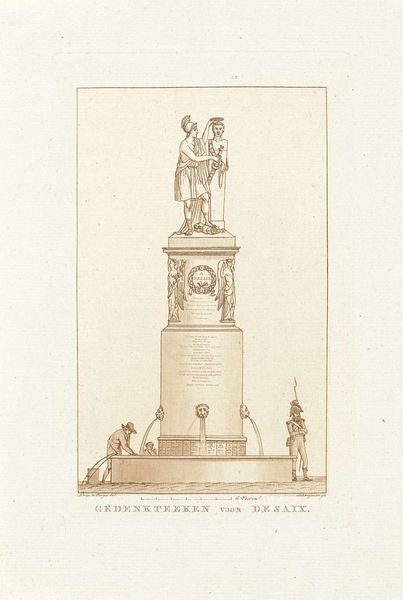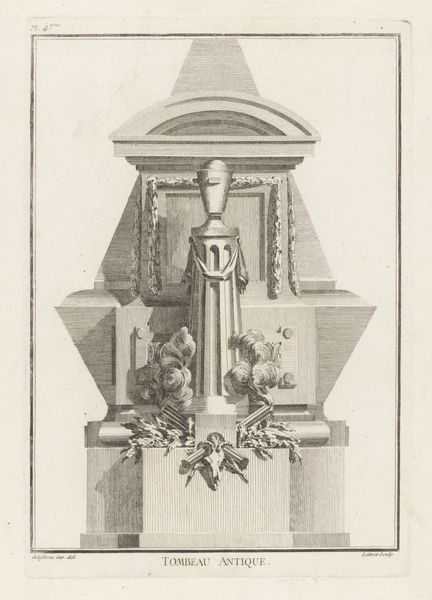
drawing, engraving
#
portrait
#
drawing
#
neoclacissism
#
allegory
#
landscape
#
form
#
line
#
history-painting
#
engraving
Dimensions: height 281 mm, width 114 mm
Copyright: Rijks Museum: Open Domain
Editor: This is R. Ziesenis's 1795 design for a memorial to Pieter Nieuwland, rendered in engraving. It has a somber, neoclassical feel to it, with the figure of a weeping woman. What strikes you most when you look at it? Curator: Immediately, I consider how Neoclassicism becomes a visual language for expressing loss, but also perhaps social and political anxieties. The stark lines, the allegorical figure – these aren't just aesthetic choices. What does it mean to monumentalize grief in this particular style during this revolutionary period? Editor: That's interesting. The French Revolution was happening around the time Nieuwland died, wasn't it? How does that impact our understanding? Curator: Exactly! The personal loss becomes intertwined with a broader societal upheaval. Neoclassicism, with its allusions to republican Rome and virtue, gets mobilized as a visual language for mourning during moments of societal transformation, and speaks to the anxieties about legacy and the fragility of Enlightenment ideals in a period marked by radical change and social unrest. Notice how the landscape elements seem almost…regimented? Editor: They do seem very controlled, not natural at all. Almost oppressive. Curator: Precisely! How does the figure of the grieving woman function within this rigid, idealized space? Is she simply representing personal sorrow, or could she be embodying something larger – perhaps a lament for a lost world, or anxieties regarding motherhood and the loss of sons amid war and revolution? Editor: So, it's not just a memorial to one man, but also reflects anxieties of the period? Curator: Indeed. The image becomes a site where individual grief intersects with wider concerns about historical shifts. Considering the political turbulence during the artwork's conception can reveal potent connections between aesthetic expression and lived experience. What will you take away from it? Editor: I'll never see neoclassical art the same way. I hadn't really connected it to political turmoil before.
Comments
No comments
Be the first to comment and join the conversation on the ultimate creative platform.
